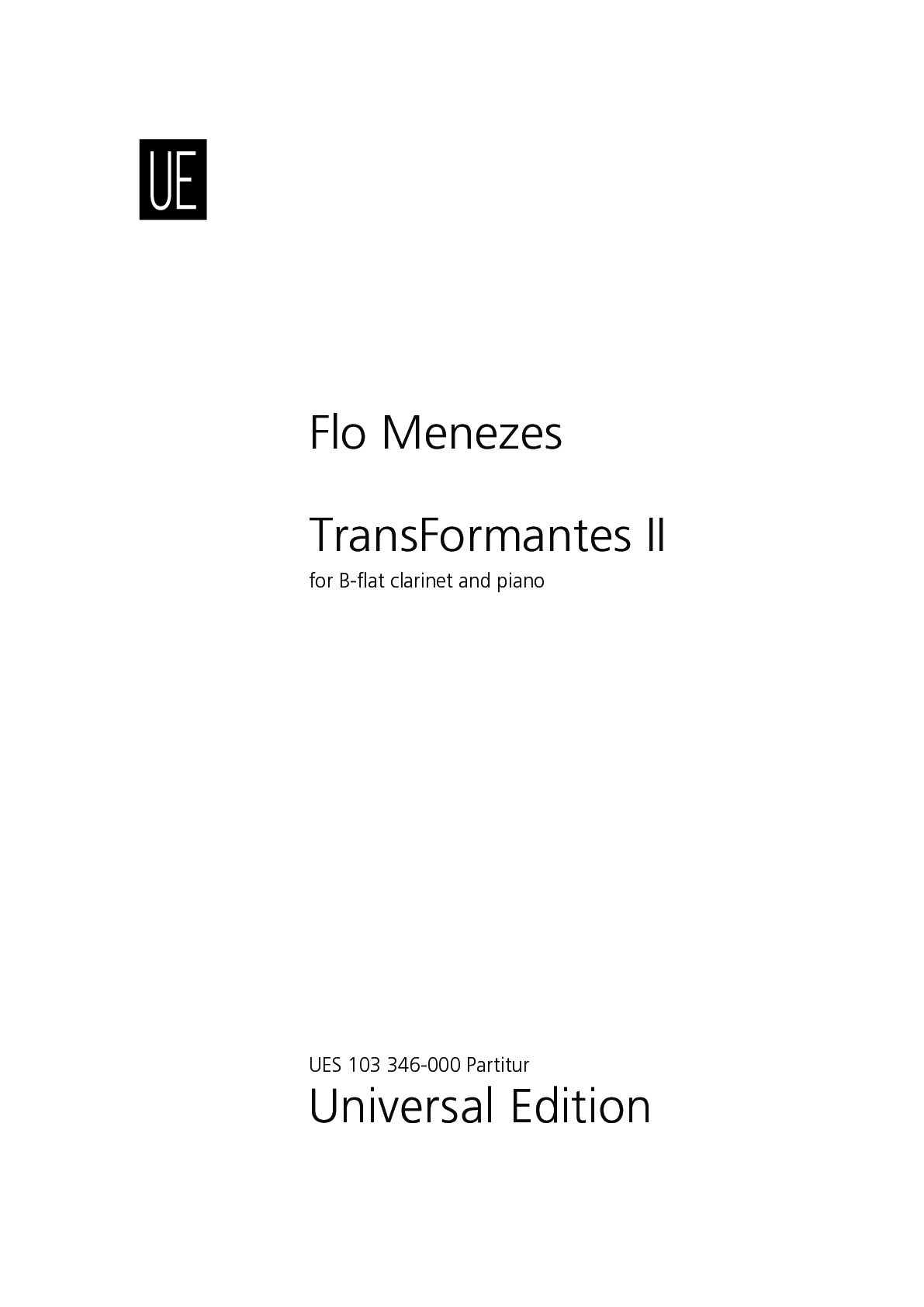.png)
Digital edition
immediately available as PDF
€35.95
Payments:
Shipping:
Flo Menezes
TransFormantes II, for B-flat clarinet and piano
UES103346-000
Type: Dirigierpartitur
Format: 210 x 297 mm
Pages: 40
Digital edition
immediately available as PDF
€35.95
Payments:
Shipping:
Audio preview
Description
In TransFormantes II, I transpose the acoustic phenomenon of the formant, as a spectral region of contrast that becomes responsible for the characterization of timbres, to the musical form: in the various sections that compose the work, a "disturbing" and unstable gesture, which I call transformant, tends to usurp the place of an essentially static texture. Progressively, what was unstable steals the scene, and the static takes over the differentiating function of the now dynamic texture. In this process, the clarinet, at first sounding distant in space, tends to amalgamate and merge with the sonorities of the piano, resulting in the last gesture, in which the clarinetist plays inside the piano's resonance box, and the piano lends its resonant potential to the clarinet.
In TransFormantes II, we can observe several constitutive characteristics of my concerns in composition: the simultaneous employment of different methods of interval proliferation (my cyclic modules allied, here, to Olivier Messiaen's symmetrical permutations applied, however, to the harmonic rather than the rhythmic dimension); the composition of dynamic profiles or contours of intervals; the tendency to detailed articulations of a certain diachronic density; the coexistence of multiple directionalities, at various levels of the musical texture, through which distinct transformation processes occur in very different temporal dimensions (allowing various possible "readings" of the musical material); the existence of the referential function at the level of the basic structural material itself (built from the intersection of two cyclic modules based on two chords from Luciano Berio's orchestral works), without making explicit and literal use of quotations; the transposition of the acoustic phenomenon of the formant, as a region of contrast that becomes responsible for the characterization of timbres, from the synchronic axis of the harmonic components to the diachronic axis of the successive moments that constitute the musical form (as protuberances of the form and, in this sense, making reference to an old composition: TransFormantes I, from 1983, for string orchestra and piano, noting, in this context, that this employment of the notion of formant differs substantially from its approaches in the 1950s in works by Boulez or Stockhausen); the conception of musical time as duration; and, finally, the structural reflection around the phenomenon of acoustic space (the clarinetist traveling a path toward the piano throughout the work).
Built on the basis of one of the harmonic techniques I have been developing for years (cyclic modules), the work develops a detailed work of what we could call profile composition, with the interpolation of melodic contours elaborated, in turn, from Messiaen's symmetrical permutations applied not to rhythms, but rather to musical notes. In TransFormantes II, I elaborate for the first time what can be called profile interpolation, here in a specific sense: a certain interval profile introjects itself amidst two others, assuming the harmony (notes) of the previous one and the dynamic contour of the intervals of the following one.
For me, the constitution of a material prior to the composition itself is necessary to the elaboration of the work as long as it is impregnated with directionality. Elaborating a material already means, therefore, composing, glimpsing the trajectory of the textures that will constitute the work, and this even when working with electroacoustic resources. The figures, to use a term so dear to Brian Ferneyhough, that come from the context of the writing itself, acquire, however, a crucial importance, assuming the function of an essential detailing and craftsmanship of that already foreseen in part by the pre-elaborated musical material, a prediction that does not occur in a pre-determinist way (as serial thought once wished), but rather in a phenomenological way, pertinent, in the first and last instance, to the ears.
TransFormantes II is inserted, therefore, in the framework of a maximalist poetics, as I define my music, in which the rigor of the writing reflects the multiple procedural networks that go from the subliminal and latent structures to the most manifest, as in any composition that wants to be, in some way, complex.
TransFormantes II was written in 1995 on commission from the Fondation Royaumont near Paris, on the occasion of summer courses with Brian Ferneyhough and, that year, Michael Jarrell, for which I was selected and awarded this commission, addressed to the Ensemble Recherche of Freiburg. It is for this reason that the terms of its score were written in French.
More information
Type: Dirigierpartitur
Format: 210 x 297 mm
Pages: 40

